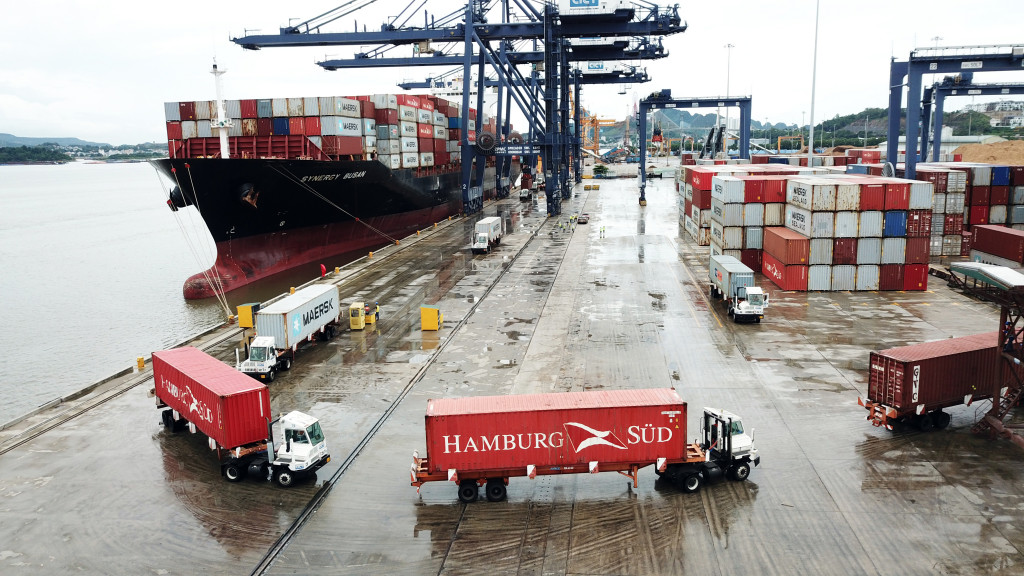Navigating the Giant Waters: Exploring the World of Large Shipping Companies
Ever wondered how those massive cargo ships cross oceans, bringing goods from distant shores to your doorstep? Understanding this process is key. The logistics are fascinating! This exploration dives deep into the large shipping companies shaping global trade.
The Global Trade Titans: Who are they?

Source: twimg.com
Large shipping companies (or liner companies), are fundamental players in international commerce. They connect continents (yes, continents!).
- Maersk: Known for container shipping and port infrastructure.
- MSC: A leading global player with a wide range of services.
- COSCO: China's major player with a heavy presence in Asian shipping.
- CMA CGM: Strong network with ports in several major locations.
These companies (along with other smaller players) orchestrate a complicated web of shipments, ports, and paperwork. This takes planning, patience, and of course… expertise.
How it All Works: A Simple (Yet Complex) Breakdown
Shipping is complicated but, here is a general summary.
- Orders are placed: Businesses order goods across international boundaries. It starts somewhere and needs to finish somewhere else.
- Logistics companies (like the companies mentioned before) get involved. These companies plan the routes, calculate timings and secure transport across the world. Think of the perfect recipe; ingredients need to get to the chef.
- Cargo loading and securing: Getting goods to ships is organized.
- Ocean transit: Vessels carry shipments to designated ports. Sometimes, ports are distant and take days of travel (sometimes even weeks) across miles of water and storms.
- Offloading cargo at designated port(s): Unloading goods and transporting them in the right place for the end user, customer.
- Delivery: Cargo goes directly to final destinations. (From factories to stores, in short!)
This is a simplified version. Customs, documentation, and unforeseen issues create challenges! It needs experts and resources to sort them out.
Key Challenges and Trends

Source: pssremovals.com
Shipping is always evolving and is not simple, you know.
- Port congestion: Bottlenecks can occur when ships face delays unloading or loading cargo. Imagine a highway jam but for ships and shipping containers. This can impact the timeline of shipments!
- Shipping costs: Expenses rise and fall depending on many factors. For example, fuel costs influence these numbers and demand fluctuation impacts expenses.
- Environmental concerns: Emissions, and sustainability is a focus. They need to make their processes and resources as eco-friendly as possible!
- Technology and innovation: Companies must adopt tech, like advanced navigation software and digital platforms to optimize efficiency. They are developing tech to manage their supply chains more effectively.
- Automation: Increased automation will help speed up processes and decrease human intervention.
How about safety? Ensuring ship and cargo safety is a paramount concern, isn't it? (it’s important!)
The Human Side of Shipping
Shipping isn't only machines and software; it’s also people who deal with these operations day and night, including seamen.
- Seamen and dockworkers: Essential to cargo loading/unloading and ensuring vessels stay afloat, keeping the transport lines moving!
- Logistics professionals: These staff work tirelessly to keep ships in the correct spots at the right time, coordinating all elements and ensuring seamless movement!

Source: vimc.co
Understanding the Drivers of Large Shipping
Several drivers motivate these huge corporations.
- Profit and returns. They exist to earn money; these companies aim to increase profit.
- Growth opportunities These opportunities occur both in markets for goods, the amount of cargo and global market demands (they want more shipments and bigger ships!).
- International collaborations Agreements made among shipping firms, international alliances, to establish standardized operational procedures that boost competitiveness are common.
How to Choose a Shipping Company: What are the considerations?
This is a vital decision!
- Check their reputation. Their reliability influences future work (always choose trusted brands!).
- Understand the type of services provided. Are their operations and routes right for what you need? Check their service scope; cargo and freight transportation, or some other specific delivery or shipment service.
- Read reviews (always important!) Customer experiences help determine if the services and reliability fit your expectations. You have to get some info first to evaluate the potential issues involved (price, delivery times, shipping type)
- Consider shipping costs. Get several quotes. Different routes have different price lists.
- Ask critical questions: Be thorough! Discuss timetables, how frequently they operate, delivery destinations, shipment volume.

Source: amazonaws.com
Future of Shipping
This industry is constantly evolving. Technology is going to be more significant (more significant).
- More automation: Advanced technologies will enhance efficiency.
- Sustainable practices: There is rising concern for the planet and our environmental resources. Businesses and companies need to consider these concerns, too! Shipping industries will need to evolve and adopt environmentally sound techniques and solutions!
- Technological upgrades: Shipping companies will need advanced tech, including intelligent systems and robotic applications (such as machine learning). New strategies are emerging, so pay attention!

Source: website-files.com
Frequently Asked Questions (FAQs)
Q: How can I find out which shipping companies cover certain regions?
A: Check their websites. (You may find it on their site, very useful.)
Q: Are there international organizations influencing shipping procedures?
A: Many bodies and institutions help structure shipping processes. (It is regulated)
This in-depth look covers the key elements of large shipping companies, touching upon how these services shape our interconnected global world, both in current times and likely for the foreseeable future. The global shipping ecosystem and supply chain continue to adapt to address changes as demand fluctuations, ecological pressures, and market complexities emerge. This study gives valuable insights and offers ways to approach logistics and evaluate shipping choices in business scenarios and day-to-day interactions.



